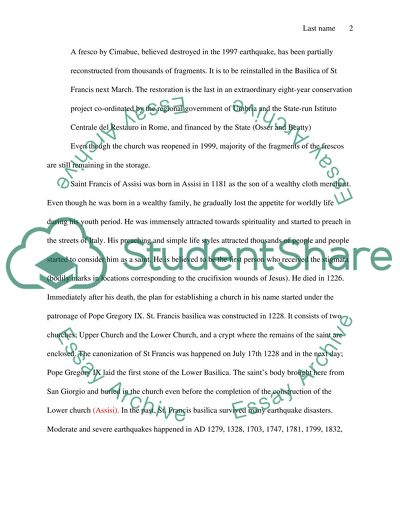Cite this document
(“Restoring the Basilica of Saint Francis in Assisi Essay”, n.d.)
Retrieved from https://studentshare.org/literature/1428184-restoring-the-basilica-of-saint-francis-in-assisi
Retrieved from https://studentshare.org/literature/1428184-restoring-the-basilica-of-saint-francis-in-assisi
(Restoring the Basilica of Saint Francis in Assisi Essay)
https://studentshare.org/literature/1428184-restoring-the-basilica-of-saint-francis-in-assisi.
https://studentshare.org/literature/1428184-restoring-the-basilica-of-saint-francis-in-assisi.
“Restoring the Basilica of Saint Francis in Assisi Essay”, n.d. https://studentshare.org/literature/1428184-restoring-the-basilica-of-saint-francis-in-assisi.


